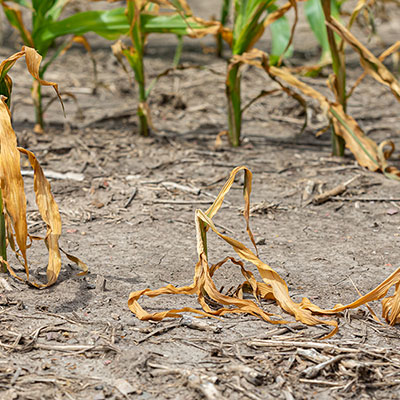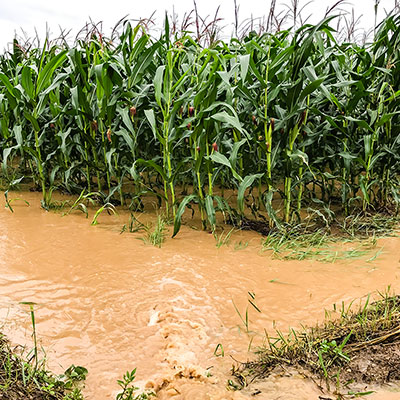The climatic incidents.
At the basis of every cultivation system, there is the need to control and manage the main determining parameters namely soil, light, fertility, and temperature, each of these in turn influences or is influenced by one single vital element, water.
The impact of this element has lately been studied much more as now we more frequently are witnessing dry springs characterized by harsh temperature ranges and followed by periods of torrential rains which represent the prelude to long summer with scorching temperatures, these are situations that now more often happen in each agricultural season and cause direct damage to the crops, such as destruction of the leaves, yellowing, lodging, and different types of stress.
If the trend of the last 10 years is followed, in the coming months we will witness frequent and severe drought periods, especially in western Europe and the Mediterranean area, and consequently increasing water supply shortage in the crop production seasons.
In fact, in some areas, for instance, in several Italian provinces, farmers are already dealing with the increase in irrigation water cost and this will inevitably lead to an increase in final production costs as well.
Therefore, a proper strategy represents a fundamental tool for guaranteeing income to farmers and assuring supply for the agro-industry sector.
 |
 |
| drought | Flooding |
What are the symptoms and mechanisms involved?
High temperatures and scarcity of water lead to the closure of the stomata by the plant in order to limit the dehydration of the plant tissues, at the same time, the plant also slows down the metabolic processes, including those involved in the absorption of nutrients and photosynthesis.
When this condition continues over time, the roots lose the ability to absorb the little residual water in the soil and soon after that, the aerial tissues begin to losing of turgidity, withering, and showing visible signs of chlorophyll degradation like yellowing.
If the situation continues like that, could lead to partial or complete leaf fall, the chlorophyll content is, in fact, one of the most used indicators to evaluate the level of metabolic imbalance in plants subjected to water stress.
 |
| Plant transpiration diagram |
Cell turgor and reduced evapotranspiration: the two key points of the Cifo strategy
The solution presented by Cifo is a protocol developed in the field which aims at maximizing water use efficiency by applying 3 main considerations
| ✔️ Selection of the best formulation technologies |
| ✔️ Physico-chemical analyzes on plants and soils |
| ✔️ Efficacy test in various pedoclimatic conditions |
These three parameters made it possible to identify the nutritional matrices that present the best relationship between effectiveness and cost containment with a view to maximizing the economic return on investment for the farmer.
The result of this research has led to the selection of a commercial formulation obtained with technologies with less environmental impact: Macys BC 28, the formulation of this product makes it possible to take full advantage of the seaweed extract which has positive effects on evapotranspiration, the accumulation of Osmo-protectors inside the plant cells and increasing cell turgor.
A specialty in action
 |
The presence of numerous biologically active substances naturally contained within the seaweed, in particular laminarins, betaines, and alginates, induces the overexpression of some genes involved in stress control mechanisms, such as the synthesis of ABA and antioxidants, the nitrogen metabolism and photosynthesis process.
All these physiological modifications allow the mitigation of oxidative stress and better efficiency in the use of water (greater stomatal conductance and better photosynthetic activity)
A high-resolution photo of the underside of a vine leaf – comparison of different treatments on cell turgor
 |
 |
| Standard Farm treatment | Cifo treatment |
————– USEFULL LINKS ————–

